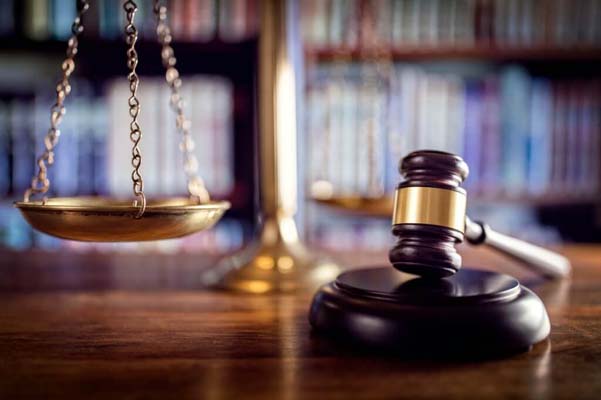The process of a lawsuit starts with an initial hearing, at which the defendant learns about their rights and whether they can be bailed out. The judge then decides whether the defendant can file an injunction to prevent a specific action from being done, to prevent irreparable damage to the plaintiff. During the litigation, discovery occurs, which includes interviews and interrogatories. A lawsuit also involves a process called discovery, which is also referred to as the issue phase.
Injunctions
Injunctions are usually granted when a plaintiff can prove that the defendant violated their SEP. However, courts are rarely willing to grant a preliminary injunction, and the path from “becoming concerned” to blocking a change is long and arduous. This is because racial bias is often a primary factor, and in some cases, officials who were elected under racially discriminatory ground rules could later pass new laws.
Historically, India has been a difficult jurisdiction for patent infringement lawsuits, especially in cases that involve older, invalid, or invalid patents. Patent infringement suits in India have been particularly difficult to obtain because of the complex nature of the technology involved. The complexity of the technology involved makes it impossible to reach a prima facie conclusion on the validity of a patent. Nevertheless, many patent owners are hopeful about the future and look forward to a more swift resolution of infringement disputes.
Interrogatories
There are three primary methods to respond to interrogatories in a lawsuit. The first method is to ask the other party to provide answers to the questions. This process is called a motion to compel. A motion to compel is filed by one party to require another to answer the interrogatories. If the other party does not respond to the interrogatories within the specified period, the other party can ask the judge to extend the deadline to a certain date.
A party may object to an interrogatory if they have equal access. An example of such an objection is when the answer is publicly available. An interrogatory may require the plaintiff to identify every person who saw John Doe slip on a banana peel at one point in the past 28 years. In some situations, the plaintiff may also object to the question. The interrogatory may be filed after the parties agree to settle the case.
Counterclaims
There are several situations where a Defendant may choose to file a Counterclaim to a lawsuit. First, if the Defendant sues the Plaintiff under a contract, he or she may file a Counterclaim in a separate case. However, if a Defendant chooses to file a Counterclaim in the same case as the Plaintiff, he or she must do so in the same court.
During the litigation, both the plaintiff and defendant have the opportunity to bring a counterclaim. These claims can be related to the same event, but they are not necessarily related. For example, the attorney representing the doctor may claim that the patient contributed to the injuries that resulted from the negligence of the physician. A plaintiff who decides to file a counterclaim may not want to file the lawsuit, as it will complicate the process for the defendant.
Nolo contendere
A nolo contendere lawsuit filed by an individual may have some benefits for the plaintiff. It allows the plaintiff to avoid admitting fault, which could lead to an adverse outcome for the defendant. Let’s say that Dawson punched Creek in the nose and now he’s on trial for criminal assault. The district attorney’s office decides to file a criminal lawsuit against Dawson, but Creek retains the services of a personal injury lawyer and files a civil lawsuit against him.
There are many reasons to file a nolo contendere lawsuit. The first is that the guilty plea may help you get a better deal on your case. A guilty plea could even result in a lesser sentence in a civil lawsuit. Alternatively, a nolo contendere lawsuit will allow you to accept the punishment for your crime without admitting fault in the civil action. If you are unsure of whether you want to file a nolo contendere lawsuit, make sure to talk to your attorney about your options.
Concurrent jurisdiction
Several types of cases can have the same court have concurrent jurisdiction. Federal and state courts, for example, have overlapping jurisdiction in certain types of cases. In addition, some states have created specialized courts that hold concurrent jurisdiction with a higher state court in a specific area and decide similar cases. In these cases, the plaintiff or defendant will attempt to file their lawsuit in the court which will likely give them the best outcome.
In this scenario, Wile E. Coyote seeks to sue Acme in federal court, arguing that a federal court will understand his case better than a state one. While he lives in Arizona, Acme is incorporated in Delaware and has its principal place of business in Chicago, Illinois. The federal court will likely decide the case against Wile E. Coyote, even if it doesn’t have a corresponding state court.
Jury pool
During the trial, a judge will select a jury from a pool of potential jurors and explain the case. The judge will also go over the charges and dispute. Potential jurors will be introduced to the parties and asked a few questions about their backgrounds. A questionnaire may also be used to determine the potential jurors’ age, education level, and other interests. After they’ve completed the questionnaire, the court will select the jurors.
If a lawsuit is filed against a business, the jury will be selected from a jury pool of businesses and individuals. A judge will choose the members of the jury based on the qualifications of each potential juror. A prospective juror may be excluded from the trial for a variety of reasons. For example, an individual may be a relative of one of the parties or a person who works for one of them. The judge may also excuse a prospective juror for cause.





How can I get involved with Sandander bank lawsuit